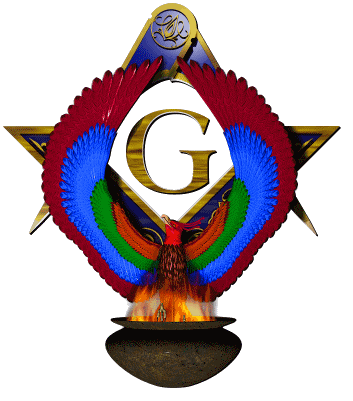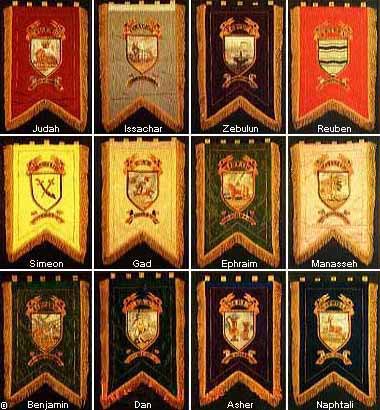TWELVE POINTS OF LIGHT FROM THE 12 TRIBES OF ISRAEL
by Ronald Holder, PM
"There are in Masonry," say the ancient lectures, "twelve original points which form the basis of the system, and comprehend the whole ceremony of initiation. Without the existence of these points, no man ever was, or can be, legally and essentially received into the Order. Every person who is made a Mason must go through all these twelve forms and ceremonies, not only in the first degree, but in every subsequent one." Esteeming these points of the highest importance in the ceremonies of the Order, our ancient brethren exercised great ingenuity in giving them symbolical explanations, and refer the twelve parts of the ceremony of initiation to the twelve tribes of Israel.
Notwithstanding the value and importance our ancient brethren deemed theses points to possess, the Grand Lodge of England thought proper, at the Union in 1813, to strike them from its rituals, and substitute three "new" points. Neither of these systems has ever been practiced in this country; the "four" perfect points" constitute an adequate substitute for either. The symbolism embraced in the explanation of the "Twelve Grand Points" may not be uninteresting or unacceptable to the reader.
1. The opening of the Lodge was symbolized by the tribe of Reuven (Reuben), because he was the first born of his father Jacob, who called him "the beginning of his strength," the door, as it were, by which the children of Israel entered the world. He was, therefore, appropriately adopted as the emblem of that ceremony which is essentially the beginning of every initiation.
2. The preparation of the candidate was symbolized by the tribe of Simeon, because Simeon prepared the instruments for the slaughter of the Shechemites, which excited the heavy displeasure of his parent; and therefore, to perpetuate abhorrence of his cruelty, candidates for initiation were deprived of all weapons, both offensive and defensive. Remember from the scriptures, Shechem violated the chastity of Simeon's sister, Dinah, and with his brother Levi, killed the Shechemites during the third day of recovery from their circumcision. This is a period of time, when the male organ is most sensitive when circumcised as an adult.
3. The report of the Senior Deacon referred to the tribe of Levi, in commemoration of the signal or report which Levi was supposed to have given to his brother Simeon when they assailed the men of Shechem at a time when they were incapable of defending themselves, and put them all to the sword, because of the affront which, Dinah, their sister, had received from Shechem, the son of Hamor.
4. The entrance of the candidate into the Lodge was symbolized by the tribe of Judah, because they were the first to cross the river Jordan and enter the promised land of "milk and honey," coming from the darkness and servitude, as it were, of the wilderness by many dangerous and wearisome journeys into the light and liberty of Canaan.
5. The prayer was symbolized by Zevulun (Zebulun), because the blessing and prayer of Jacob were given to Zevulun, in preference to his brother Issachar.
6. The circumambulation referred to the tribe of Issachar, because, as a thriftless and indolent tribe, they required a leader to advance them to an equal elevation with the other tribes.
7. The advancing to the altar was symbolized by the tribe of Dan, that the candidate might be taught by contrast to advance in the way of truth and holiness as rapidly as this tribe advanced to idolatry, for it was among the tribe of Dan that the serpent was first set up for adoration.
8. The obligation referred to the tribe of Gad, in allusion to the solemn vow which was made by Jephthah, Judge of Israel, who was of that tribe.
9. The entrusting of the candidate with the mysteries was symbolized by the tribe of Asher, because he was then presented with the rich fruits of Masonic knowledge, as Asher was said to be the inheritor of fatness and royal dainties.
10. The investiture of the lambskin, by which the candidate is declared free, referred to the tribe of Naphtali, which was invested by Moses with a peculiar freedom, when he said, "O, Naphtali, satisfied with favor and full with the blessing of the Lord, possess thou the West and the South."
11. The ceremony of the northeast corner of the Lodge referred to Joseph, because as this ceremony reminds us of the most superficial part of Masonry, so the two half tribes of Ephraim and Manasseh, of which the tribe of Joseph was composed, were accounted to be more superficial than the rest, as they were the descendants of the grandsons only of Jacob.
12. The closing of the Lodge was symbolized by the tribe of Benjamin, who was the youngest of the sons of Jacob, and thus closed his father's strength.

